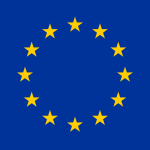12 Jun EU High Risk Country List: What Businesses Need to Know in 2025
EU High Risk Country List—The fight against financial crime is an evolving battle. As global money laundering networks grow more sophisticated, regulatory bodies are updating their frameworks to keep pace. One such tool is the EU High Risk Country List—a key regulatory mechanism that identifies jurisdictions with strategic deficiencies in anti-money laundering (AML) and counter-terrorist financing (CFT) frameworks.
In June 2025, the European Commission updated this list to better align with international standards, especially those laid out by the Financial Action Task Force (FATF). This article explores what the updated list means for regulated entities, compliance officers, and international businesses operating within or in connection with the European Union.
What Is the EU High Risk Country List?
The EU High Risk Country List comprises non-EU jurisdictions that pose significant threats to the integrity of the EU’s financial system due to inadequate AML/CFT controls. Entities engaging in financial transactions with these countries are obligated to apply enhanced due diligence (EDD) procedures.
This list is embedded in Article 9 of the EU’s 4th Anti-Money Laundering Directive (AMLD), and serves to complement FATF’s own “grey list” and “blacklist” by reflecting EU-specific risk assessments.
Latest Update: June 2025 Changes to the EU High Risk Country List
On 10 June 2025, the European Commission announced a significant revision to the list, adding and removing several jurisdictions based on comprehensive risk reviews and FATF evaluations.
✅ Countries on the List:
- Algeria
- Angola
- Côte d’Ivoire
- Kenya
- Laos
- Lebanon
- Monaco
- Namibia
- Nepal
- Venezuela
The inclusion of Monaco was particularly notable. As a major financial hub with a high volume of private banking activity, its listing reflects concerns over insufficient regulatory enforcement despite formal commitments to reform.
❌ Countries Removed from the List:
- United Arab Emirates (UAE)
- Barbados
- Gibraltar
- Jamaica
- Panama
- Philippines
- Senegal
- Uganda
The removal of the UAE follows FATF’s decision to delist it in February 2024. The EU Commission acknowledged major strides made by the Emirates, including tougher penalties, heightened financial supervision, and institutional reforms.
The Criteria for Inclusion
To be listed, a jurisdiction must exhibit “strategic deficiencies” in key areas such as:
- Customer due diligence and beneficial ownership transparency
- Suspicious transaction reporting
- Financial intelligence unit (FIU) functionality
- Sanctions compliance
- International cooperation on AML/CFT enforcement
Assessments are based on FATF mutual evaluation reports, direct EU analysis, and multilateral engagement with financial crime units worldwide.
What Does Listing Mean for Businesses?
Entities subject to the EU’s AML regime—such as banks, legal firms, estate agents, and crypto providers—must conduct enhanced due diligence on any transactions involving high-risk jurisdictions. This includes:
- Gathering additional information on clients
- Obtaining information on the source of funds
- Conducting deeper background checks
- Strengthening ongoing monitoring processes
Failure to apply these measures may result in enforcement action from national regulators and reputational damage.
Spotlight on Monaco: Why Was It Added?
Monaco’s addition came as a surprise to many due to its reputation as a stable financial centre. However, recent FATF evaluations revealed that while the country had made legal amendments, practical enforcement remained inconsistent—particularly in cross-border reporting and beneficial ownership transparency.
The EU’s listing underlines its stance that cosmetic compliance is no longer sufficient—countries must demonstrate tangible, systemic improvements.
Implications for EU-Based Compliance Teams
This update has significant operational implications for compliance professionals across the EU:
- Update Risk Frameworks: All firms must refresh internal lists and screening tools to reflect the changes.
- Client Reviews: Existing clients from newly listed countries should be reassessed in light of their risk profile.
- Staff Training: AML teams should be briefed on new risks and due diligence expectations.
- RegTech Integration: Advanced software tools that monitor list changes in real time can help reduce compliance gaps.
Alignment with FATF and Global Cooperation
The EU continues to align closely with the FATF to maintain global consistency in AML measures. This includes active participation in FATF-style regional bodies (FSRBs) and leveraging data from cross-border criminal investigations.
However, the EU retains the right to go further than FATF if it identifies unique threats to its single market—hence the inclusion of jurisdictions like Monaco, which are not currently on the FATF grey list.
What’s Next: Timeline and Implementation
The revised list is subject to a one-month scrutiny period by the European Parliament and the Council. If no objections are raised, the list will be formally adopted via a Delegated Regulation and published in the Official Journal of the EU.
The updated rules are expected to take effect by late July 2025, giving institutions a short window to adapt.
Staying Ahead of Regulatory Change
The EU High Risk Country List is more than a regulatory formality—it is a signal to businesses that they must remain vigilant, responsive, and proactive in managing financial crime risks. With international scrutiny intensifying and the cost of non-compliance rising, there has never been a more important time for firms to tighten their AML frameworks.
By understanding and acting on the 2025 updates, businesses can not only protect themselves but also contribute to a more transparent and secure global financial system.
KYC Lookup is a fully accredited AML Training provider helping teams around the world to stay compliant via AML online training and video tutorials which are engaging, interactive and logical.




No Comments